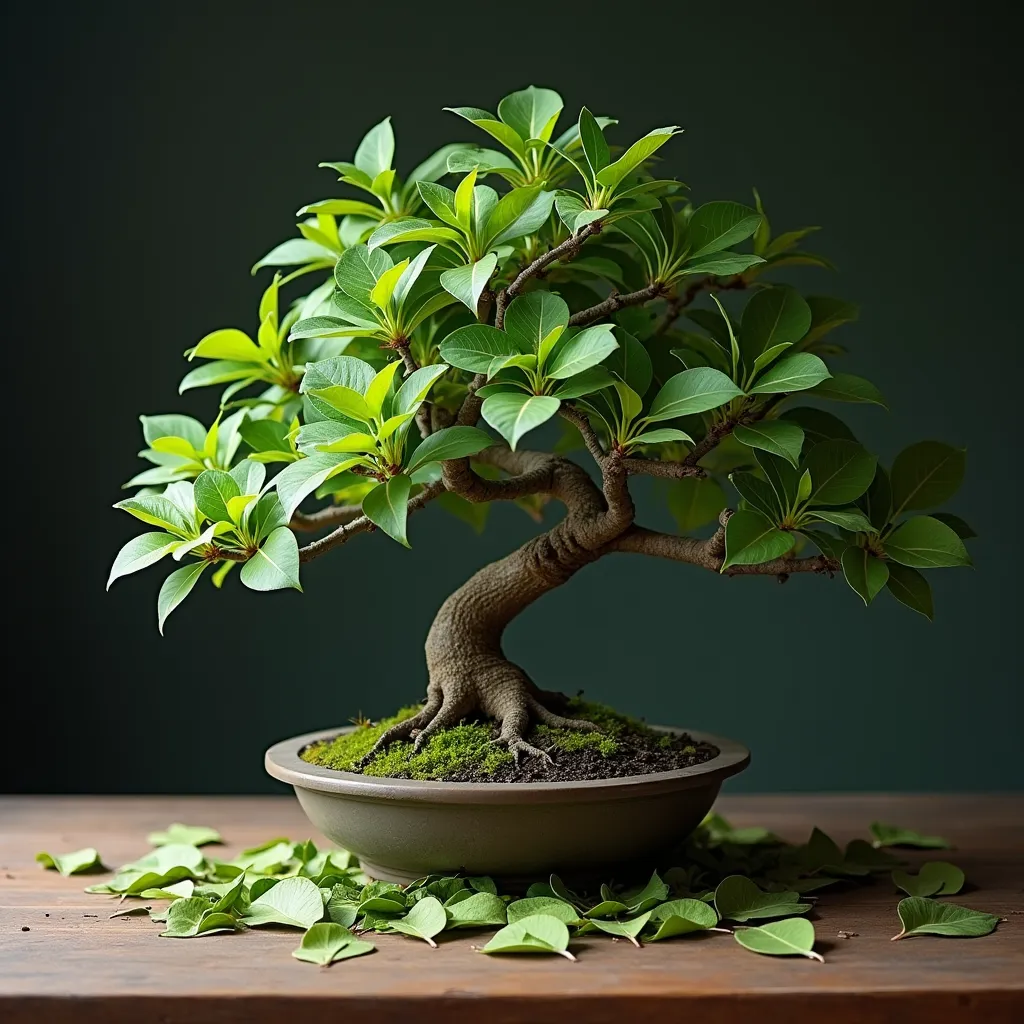How to Diagnose and Fix Leaf Drop in Your Ficus Bonsai
Ficus Bonsai trees are popular among bonsai enthusiasts for their resilience and aesthetic appeal. However, one common issue that many owners face is leaf drop. This phenomenon can be alarming, especially for beginners who may not fully understand the underlying causes. In this video, the speaker emphasizes that leaf drop is often a result of care mistakes rather than pests or diseases. By identifying the symptoms and understanding the proper care guidelines, you can effectively diagnose and remedy the situation.
This article outlines two primary scenarios that lead to leaf drop: sudden and gradual loss. A sudden drop, where a significant number of leaves fall off in a short period, typically indicates a critical issue, such as underwatering. Conversely, a gradual loss of leaves over weeks may point to problems like overwatering, insufficient light, or nutrient deficiencies. By following the care guidelines closely, you can help your Ficus Bonsai thrive and prevent future leaf drop.
TOC
- Causes of Sudden Leaf Drop
- Gradual Leaf Drop: Identifying Underlying Issues
- Nutrient Deficiencies and Their Impact
- Common Misconceptions: Insects and Diseases
- FAQ
- Conclusion
Causes of Sudden Leaf Drop
Sudden leaf drop in Ficus Bonsai is often alarming for owners, as it can result in the loss of half the leaves in just a couple of weeks. The primary cause of this rapid leaf loss is usually a sudden shortage of water. Ficus trees are not adept at storing water, so when the soil dries out completely, the tree responds by shedding leaves to conserve moisture.
To prevent this from happening, it is crucial to establish a consistent watering routine. Here are some steps to ensure your Ficus receives adequate hydration:
- Check the soil moisture regularly.
- Water the tree thoroughly when the top inch of soil feels dry.
- Avoid letting the soil dry out completely.
If the tree was healthy prior to the leaf drop, it typically regrows its leaves within a few weeks once proper watering is resumed.
Gradual Leaf Drop: Identifying Underlying Issues
In contrast to sudden leaf drop, a gradual loss of leaves over a month or two can indicate more chronic issues with care. One common culprit is overwatering, which can lead to root rot. When the roots are consistently submerged in water, they can become damaged, preventing the tree from absorbing nutrients effectively.
To address this issue, consider the following:
- Review your watering schedule to ensure it aligns with the needs of your Ficus.
- Ensure that your pot has adequate drainage to prevent water from pooling.
- Monitor the health of the roots during repotting to check for signs of rot.
Another factor to consider is light exposure. Ficus trees require ample light to thrive, and placing them too far from windows can hinder their growth. If your tree is more than three feet away from a light source, it may not be receiving enough sunlight.
Nutrient Deficiencies and Their Impact
Nutrient deficiencies can also contribute to leaf drop in Ficus Bonsai. If you have not fertilized or repotted your tree in a timely manner, it may lack essential nutrients needed for healthy growth. Regular fertilization is vital, especially during the growing season, to ensure your tree receives the necessary nutrients.
To prevent nutrient deficiencies, follow these guidelines:
- Fertilize your Ficus every 4-6 weeks during the growing season.
- Use a balanced fertilizer specifically designed for bonsai trees.
- Repot your tree every couple of years to refresh the soil and provide new nutrients.
By adhering to these practices, you can help maintain the health of your Ficus Bonsai and reduce the risk of leaf drop.
Common Misconceptions: Insects and Diseases
Many bonsai owners may mistakenly attribute leaf drop to pests or diseases. However, the speaker emphasizes that most issues with Ficus Bonsai are related to care practices rather than infestations. While it is essential to remain vigilant for signs of pests, such as webbing or visible insects, the majority of leaf drop cases can be traced back to improper watering, lighting, or nutrient management.
To ensure your Ficus remains healthy, take the time to review care guidelines and make adjustments as needed. This proactive approach will help you avoid common pitfalls and keep your tree thriving.
FAQ
Q: What should I do if my Ficus Bonsai is losing leaves suddenly?
A: Check the soil moisture immediately. If it is dry, water the tree thoroughly. Ensure you maintain a consistent watering schedule to prevent future issues.
Q: How can I tell if I am overwatering my Ficus?
A: Signs of overwatering include yellowing leaves, mushy roots, and a consistently wet soil surface. Adjust your watering routine and ensure proper drainage.
Q: How much light does my Ficus Bonsai need?
A: Ficus trees require plenty of light. Ideally, they should be placed within three feet of a window to receive adequate sunlight for healthy growth.
Q: How often should I fertilize my Ficus Bonsai?
A: Fertilize your Ficus every 4-6 weeks during the growing season with a balanced fertilizer designed for bonsai trees.
Q: Can pests cause leaf drop in Ficus Bonsai?
A: While pests can affect your tree, most leaf drop issues are related to care practices. Always check for proper watering, light, and nutrients first.
Conclusion
In summary, diagnosing and fixing leaf drop in your Ficus Bonsai involves understanding the underlying causes related to care practices. Sudden leaf drop is often a result of underwatering, while gradual leaf loss may indicate overwatering, insufficient light, or nutrient deficiencies. By adhering to proper care guidelines and regularly monitoring your tree's health, you can prevent leaf drop and ensure your Ficus Bonsai remains vibrant and thriving. Remember, the key to a healthy bonsai lies in consistent care and attention to its needs.

